A walk from the shipyard on Blasieholmen, a stop at Slottskajen and Slussen, with a view of the shipwreck. Then the ferry to Djurgården and the Vasa Museum. Route . Wikipedia .
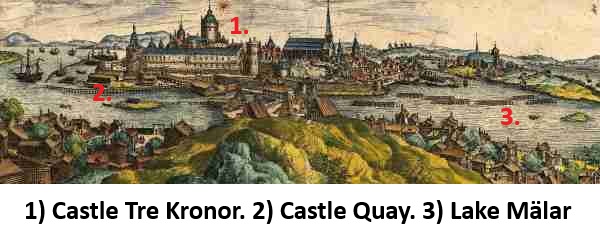
Blasieholmen. The shipyard where Vasa was built
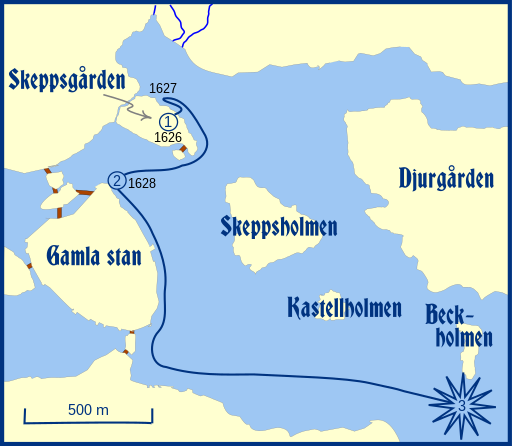
- The Vasa was built here between 1626 and 1628. In the 17th century, Skeppsgården was Sweden’s largest shipyard, located on what was then called Skeppsholmen but is now Blasieholmen. Hundreds of people worked on the construction, and the shipyard was an important military site for the navy’s shipbuilding and maintenance 6 8 4 . Video .
- Our journey begins where many walks today begin – at Nybroplan . But imagine going back to the year 1627 : here there were no traces of city quarters, only reeds in Nybroviken , simple boat jetties . Cows grazing in the meadows that stretch up towards Ladugårdslandet – today known as Östermalm .
- Feel free to sit down on the steps of the Royal Dramatic Theatre , weather permitting. Photo . Rest your legs while you imagine the countryside that once lay here.
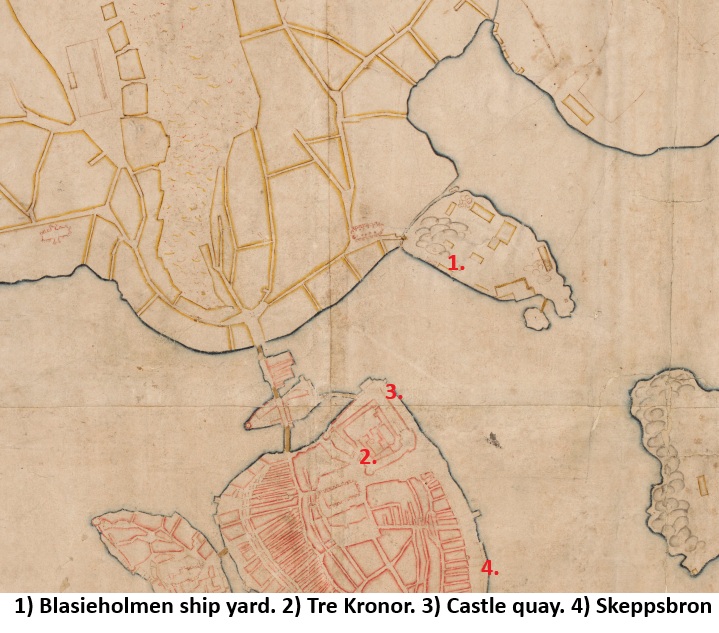
- We continue towards Blasieholmen , which in 1627 was still a real islet – separated from the mainland by a strait, approximately where we see Stallgatan. Photo . Let us there in our imagination direct our gaze to mother Skeppsgården – the shipyard with the Vasa on the stack bed.
- Here the air vibrates with work. Smoke billows from the forges , the scent of tar and freshly sawn oak fills the nose. Everywhere we see carpenters working on heavy logs. In the sheds, wooden figures are carved – lions, angels and gods – all to adorn the ship with royal splendor.
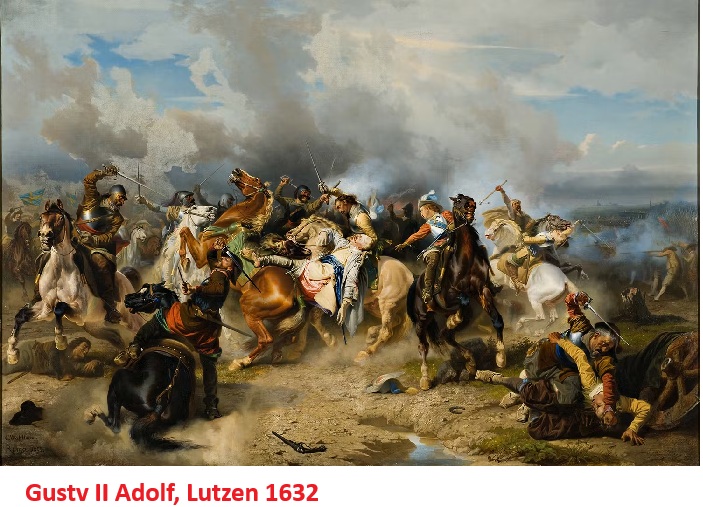
- King Gustav II Adolf is nowhere to be seen – he is fully occupied with wars in Poland and the Baltics against his cousin, Sigismund II . His presence is nevertheless felt, through the letters and instructions he sends . It is on his orders that Vasa is fitted with a third gun deck – a decision that would prove fatal.
- A melting pot of languages and cultures . The air is buzzing with Swedish, German and Dutch voices . The ship is being built according to tradition from the Netherlands. The Dutch shipbuilder who led the construction died this spring but the work continues under his widow , with the help of a new master.
- Materials from all over Europe . Building a regal ship is a logistical feat. Wood, iron and tar are sourced from Swedish forests and mountains . Hemp and sailcloth are imported from neighboring countries – even from France and Holland .
- After Blasiholmen ( Photo ) you pass Kungsträdgården with the statue of Charles XII. Photo . In 1628 there was a fenced park here with crops for the court . Feel free to make an asvticker to Kungsträdgården’s eastern T-down. Decorated with an environment derived from Kungsträdgården’s magnificent castle Makalös (which began construction in 1635). Photo . Photo .
The armor at Stockholm Palace
Hike here . the View tree. Photo .
From Blasieholmen, the hull of Vasa is pulled from the shipyard to the quay below Tre Kronor Castle. Image .
A model at the Tre Kronor Museum (at Lejonbacken, the castle’s northeast corner) gives us an idea of the place where Vasa was refitted. Image . Image . Video .
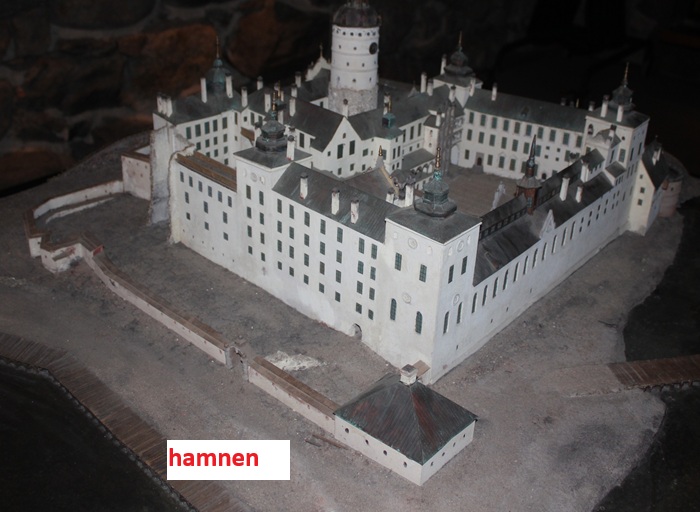
Supplies are winched aboard from the docks. Sailors erect the masts, which are rigged with ropes and pulleys. Supplies are piled on the narrow strip between the water and the castle wall. Here there are masses of stone intended for ballast – a full 120 tons, which would prove to be insufficient. 64 cannons are bolted to their hatches on the three decks. Soldiers drag the precious sails. The barrels contain both gunpowder and beer. Food and water are loaded aboard, but more provisions are to be taken aboard further out in the archipelago, where most of the soldiers will embark for the journey to the war in Poland.
Finally, at Slottskajen on the afternoon of August 10, the crew embarks together with their wives and children for the maiden voyage out to Vaxholm. The voyage is watched by Stockholmers, both in boats and in the crowds along Skeppsbron. With anchor and train, the ship is slowly played down to the southern end of Skeppsbron, which is today’s Slussen.
The shipwreck seen from Slussen/Stadsgården
Hiking from Slottskajen . Video .
Down at Stadsgården, then called Tranbodarna (where seal blubber has been cooked since the Middle Ages), the sailors hoist four sails to give the ship steering speed. Salutes are heard, with smoke from the hatches on the lower deck. The crew with women and children wave to the spectators.
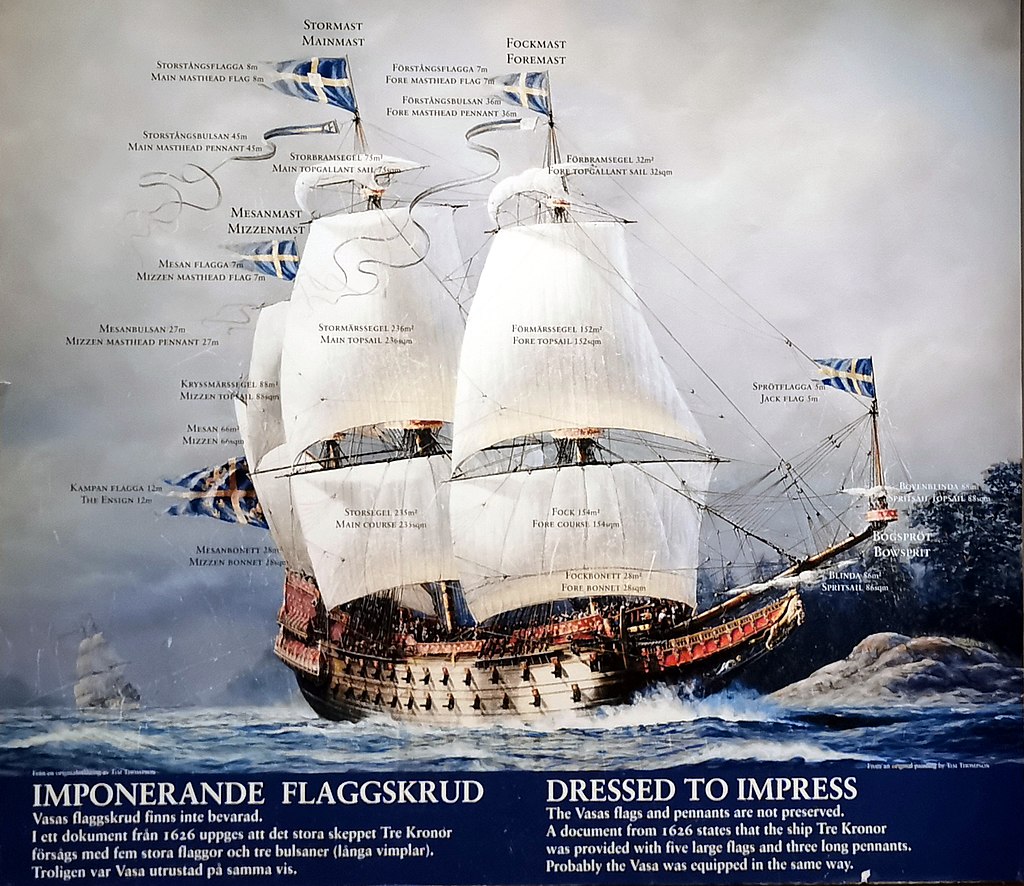
Out at Beckholmen, the wind catches the sails. Vasa lists but rises, until a new gust causes her to take in water through the open gun ports. Vasa sinks, without anyone really understanding what is happening. Many end up in the water, some grab the protruding mast tops. Small boats rush to save many. About thirty of the one hundred and fifty on board drown. The city’s church bells are heard in the evening.
Looking out towards Beckholmen from the Djurgårdsfärjan extension at Skeppsbron. Street View . Or continue to Stadsgården, by the bus terminal and the Fotografiska museet. Street View .
Almost on the day, August 8, 1993, the quays in Stockholm are filled with people – even on Skeppsbron and in Gamla stan, since it is the Water Festival. Where they get to see a display of Jas Gripen crashing at Västerbron . It is also a Swedish prestige project, technically incomplete as a war propaganda act.
Djurgården – from salvage to museum
Hiking (Djurgårdsfärjan – Beckholmen – Vasamusset). Street View 1. Street View 2. Route . Streetview . Photo .
After 333 years, amateur researcher Anders Franzén rediscovered Vasa. Divers dug six tunnels under the hull, which was lifted with steel cables from floating pontoons. On April 24, 1961, TV viewers saw the masts sticking out of the water before the ship was further lifted and taken to Gustaf V’s dry dock on Beckholmen. The dock is still used for ships and is a tourist attraction in itself. Streetview . Video .
Thousands watched as archaeologists prepared the Vasa for its relocation – first to a temporary museum on Djurgården and then, in 1991, to the new museum, built on top of an old ship dock. The museum is now Sweden’s most visited, with just over a million visitors each year. Streetview . Viewinside .
Why did Vasa sink?
Vasa was top-heavy – meaning it had too much weight above the waterline in the form of gun decks, masts and decoration, but not enough width or ballast (stones in the bottom) to be stable. This made the ship unstable and easily heeled.
The ship had two gun decks with 64 bronze cannons, which was an unusual number for its time. The construction was therefore too narrow in relation to its height and weight, especially considering how high the cannons were placed. Image .
The Vasa did not have enough ballast (stones and other weight in the bottom of the ship) to balance the heavy superstructure. More ballast would have been needed to make the ship stable, but then it would have become too heavy and sank anyway – showing that the entire design was flawed from the start.
It is said that a simple stability test was done, where 30 men ran from side to side on the deck, and then the ship began to rock alarmingly. But this was ignored, probably due to political pressure from King Gustav II Adolf , who was in a hurry to get the ship ready for war.
As Vasa sailed out of the harbor, a gust of wind came from the side. The ship heeled sharply, water rushed in through the open gun ports – and it quickly sank to the bottom.
Summary of the locations
| Place | Historical significance for Vasa |
|---|---|
| Blasieholmen | This is where Vasa was built (Shipyard/shipyard) |
| Stockholm Palace | Sailing place, large crowd gathered |
| Ship bridge | The Vasa was towed out of the harbor from here. |
| Beckholmen | Shipwreck site, where Vasa sank in 1628 |
| Vasa Museum | Here is Vaasa today, exhibitions & museums |
/ By Ingemar Lindmark

